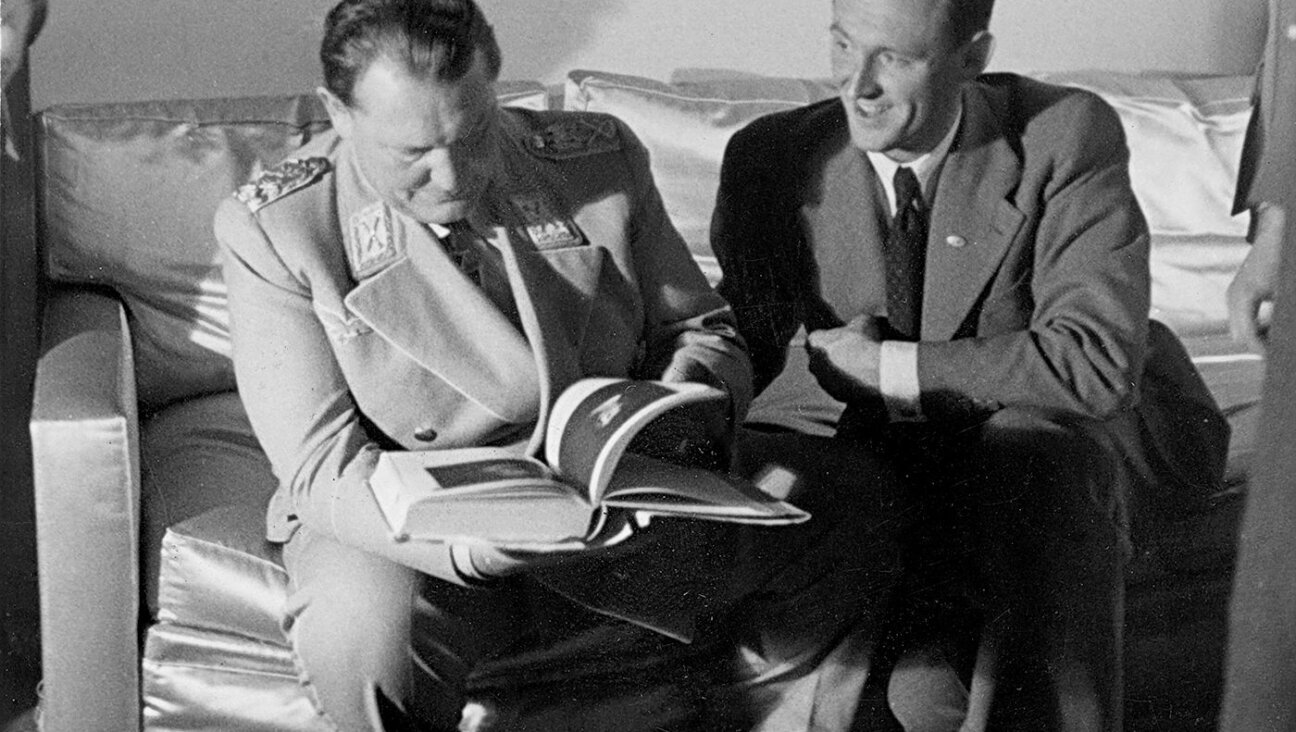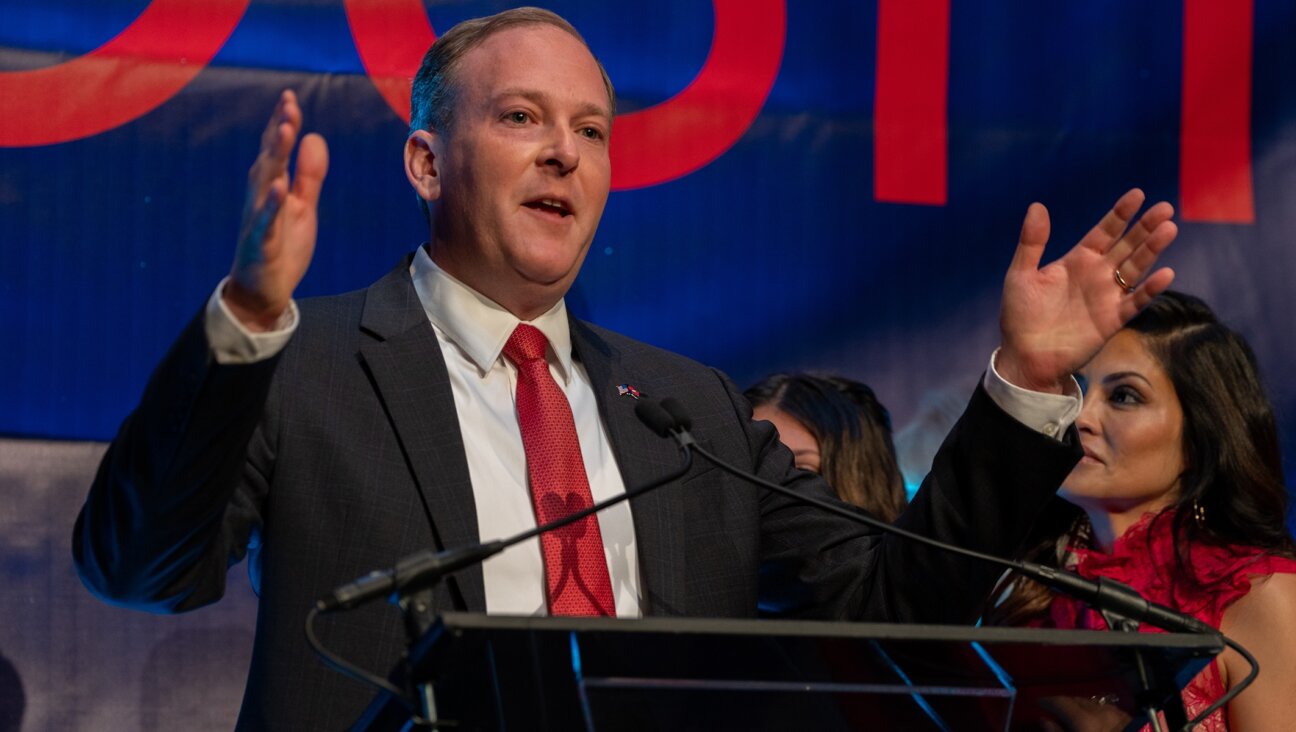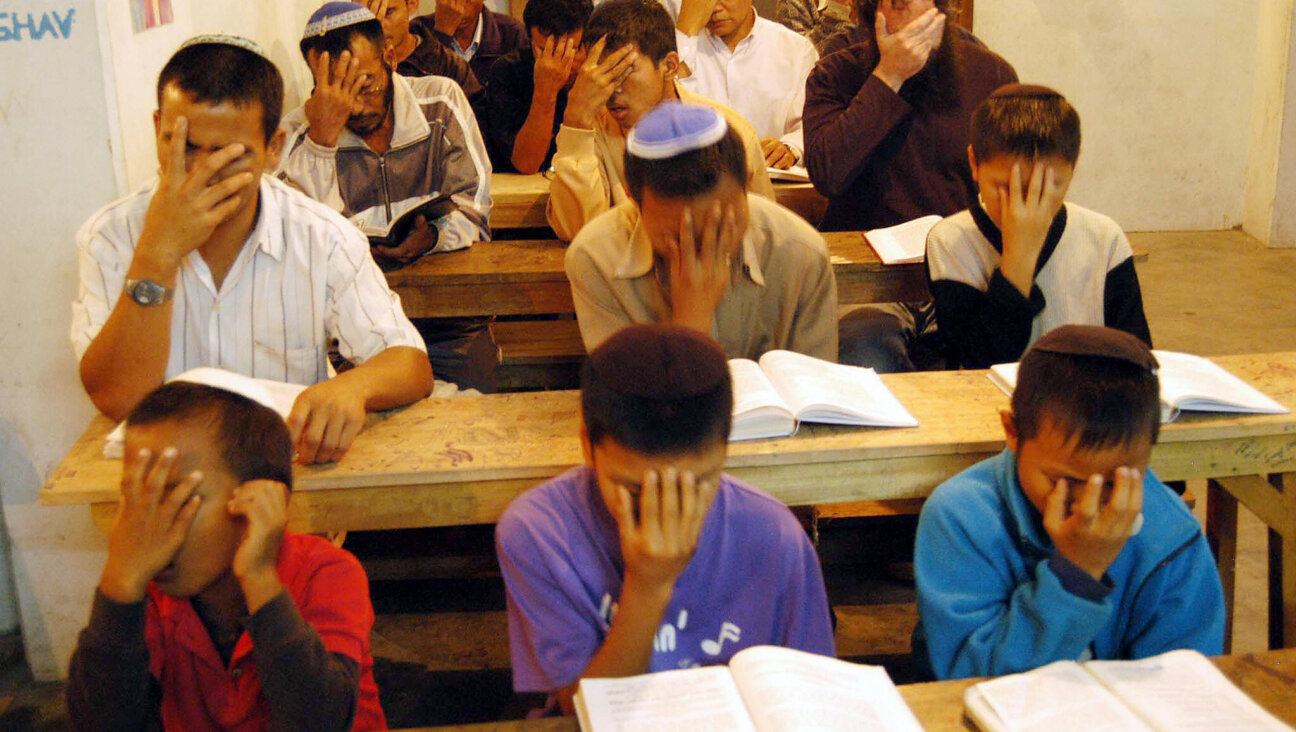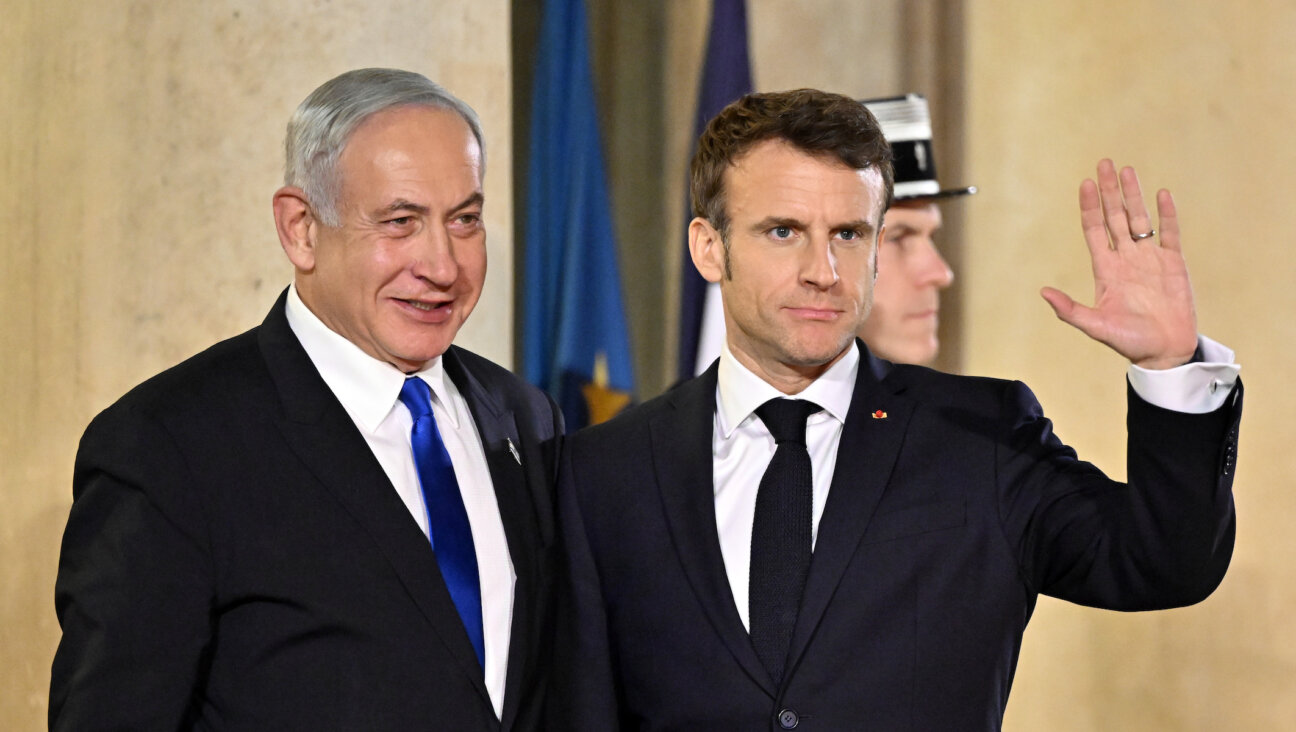‘Hanukkah: A Festival Of deLights’ Reveals The Rise Of A Family Holiday In America

Image by Amanda Field.
Filmmaker David Anton’s latest documentary for PBS is, like its subject, a family affair. Anton filmed “Hanukkah: A Festival of deLights” an hour-long special premiering Sunday November 25 on New York’s WLIW, with his father, retired rabbi Marvin Antonofsky, interviewing most of the movie’s subjects.
“For me to be able to do a project like this with my father was really wonderful,” Anton told the Forward.
The special, written and narrated by Anton’s friend, Sam Toperoff an author and former professor, is a follow up to his last film for public television, “Hugs and Knishes: A Celebration of Our Jewish Foods and Traditions.” “Festival of deLights” explains how Hanukkah, a minor holiday, became central to Jewish American life because of its accessibility and focus on family. The Jewish FOMO resulting from its proximity to Christmas is only part of the story.
As Dianne Ashton, a historian and professor at Rowan University and the author of “Hanukkah in America: A History” explains in the documentary, Hanukkah became popular in the United States thanks to two Cincinnati-based rabbis, Max Lilienthal and Isaac Mayer Weiss, who, in the 1800s held children’s festivals in their synagogues during Hanukkah.
“What was really interesting is that they both had newspapers,” Anton said. “They publicized their events and they invited their readers to send in accounts of how they adapted these events in their own synagogues.” The festivals caught on fast.
Throughout the film, Anton’s niece and nephew, Anna and Aaron Rabinowitz, ask questions of Rabbi Rafi Rank of New York’s Midway Jewish Center, who speaks to how a Jewish military victory became a holiday about hope and miracles. Abigail Pogrebin, writer of “My Jewish Year,” based on her serialized column in the Forward, describes the often-overlooked tension between the Maccabee religious militants and the assimilated Jews of the Assyrian Empire. Actor William Shatner even appears to recall the sights and smells of his mother’s kitchen while she made latkes.
As a holiday that centers the experience and ritual on children, Hanukkah was an easy sell for most secular Jews. “Part of the reason adults have so thoroughly focused Hanukkah on children is because it’s easier for them to think about making their kids happy than have to deal with the challenge of Hanukkah for themselves,” Ashton says in the documentary.
The challenge is, as it was in antiquity under Antiochus, one between fully assimilating and continuing traditions. Anton hopes to keep the tradition going with his film.
“I wanted to make a show that brought all segments of the Jewish community together,” Anton said. “It’s a show about common denominators.” Today, most American Jews celebrate and keep their lit menorahs in a street-facing window an act that Pogrebin describes as requiring “a certain courage.”
“I think in the times that we’re living in, where we’re seeing innocent people killed just for being Jewish, we need to come together,” Anton said. “The Hanukkah story is at the root of that — the idea of coming through the darkness and the hope that these candles represent.”
PJ Grisar is the Forward’s culture intern. He can be reached at [email protected].
A message from our CEO & publisher Rachel Fishman Feddersen

I hope you appreciated this article. Before you go, I’d like to ask you to please support the Forward’s award-winning, nonprofit journalism during this critical time.
We’ve set a goal to raise $260,000 by December 31. That’s an ambitious goal, but one that will give us the resources we need to invest in the high quality news, opinion, analysis and cultural coverage that isn’t available anywhere else.
If you feel inspired to make an impact, now is the time to give something back. Join us as a member at your most generous level.
— Rachel Fishman Feddersen, Publisher and CEO























